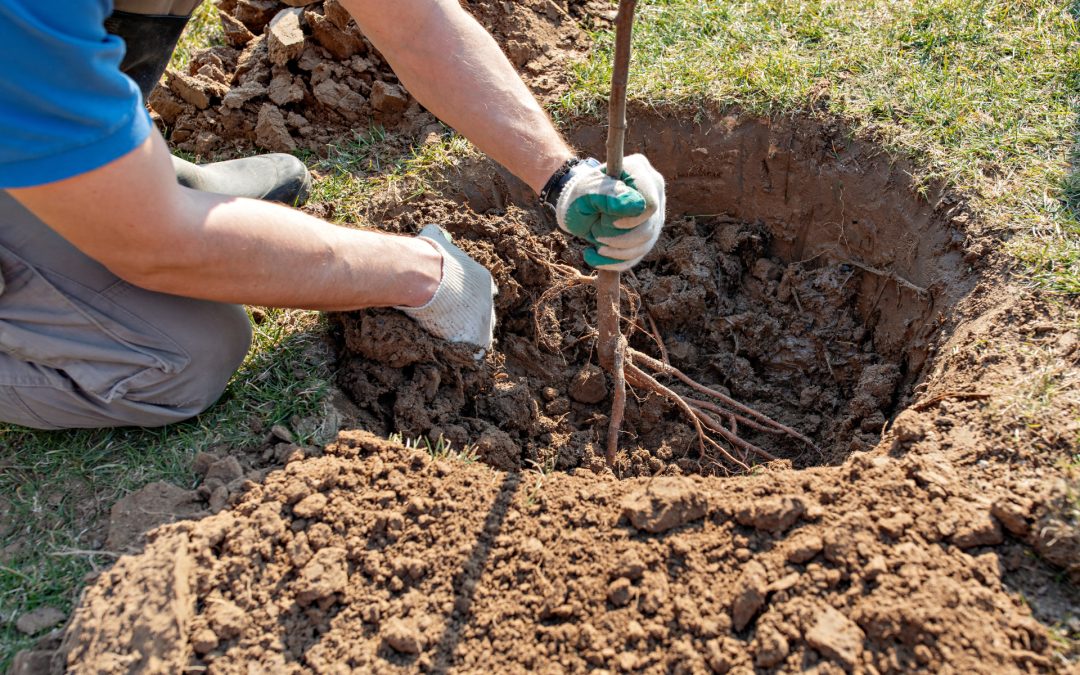A bare rooted tree is simply that – bare rooted without soil packed around their roots. Usually, these seedlings are grown in pots and then when they are ready to transport to customers, the dirt is shaken off and the trees are wrapped in damp material, then covered and shipped dormant for successful transplanting. Bare rooted trees are easier to ship and experience less water loss (transpiration) after planting to avoid transplant shock. If you’ve ordered bare root trees, it’s best to transplant them immediately upon arrival, but if this is not possible, they can last up to three weeks if you keep the roots damp and store them in a cool dark place.
Preparing to Plant
Plant your trees bare rooted or not, in late fall or very early spring, as dormancy hardens them to survive fluctuations in temperature. Prepare before the actual planting by digging a hole, preparing the soil and installing stakes for support and/or wrapping. If your soil is compact, digging a bigger hole and loosening the surrounding soil is helpful for new root development when the frost leaves the ground in spring. Adding topsoil helps boost soil quality, but compost or manure can burn the roots of your tree. If you want to add compost or well-aged manure, add them above ground after planting is finished, making sure to keep them from touching the bark, as this can cause rot. Staking helps mark smaller trees so they are not accidentally trampled during winter backyard playtime. Stakes also guard against breakage from snow load and ice, and give you a framework to wrap burlap if you need to guard your tree from corrosive agents like road salt.
Planting Tips
Plant the bare roots immediately upon unwrapping. If your tree roots are packed in damp sawdust, don’t put the sawdust into the hole. Roots aren’t accustomed to light and cold wind at this time of year can dry them out in minutes, killing them through transpiration. Compact the soil to eliminate air pockets and water until you are sure the roots are soaking, then add mulch on top to stabilise the temperature and add nutrients to the soil through decomposition. If you’re planting on a slope, form the soil at the base of the tree into a berm as a water reservoir. You’ll want to make sure you plant the tree straight, as trying to straighten a tree when it grows larger, can be frustrating and difficult.
Protecting Your Tree From Critters
Wrapping your tree can prevent deer from munching on the tender bark, and spirals can be placed around the trunk then removed in the spring. If you have noticed vole tunnels, bury the protective spiral a centimetre into the soil so they can’t lift it off.
Need help with your landscaping?
Call Pine Valley Tree Service and Landscaping to talk with one of our dedicated tree specialists. We have over 40 years of experience serving the communities of southwest BC.

